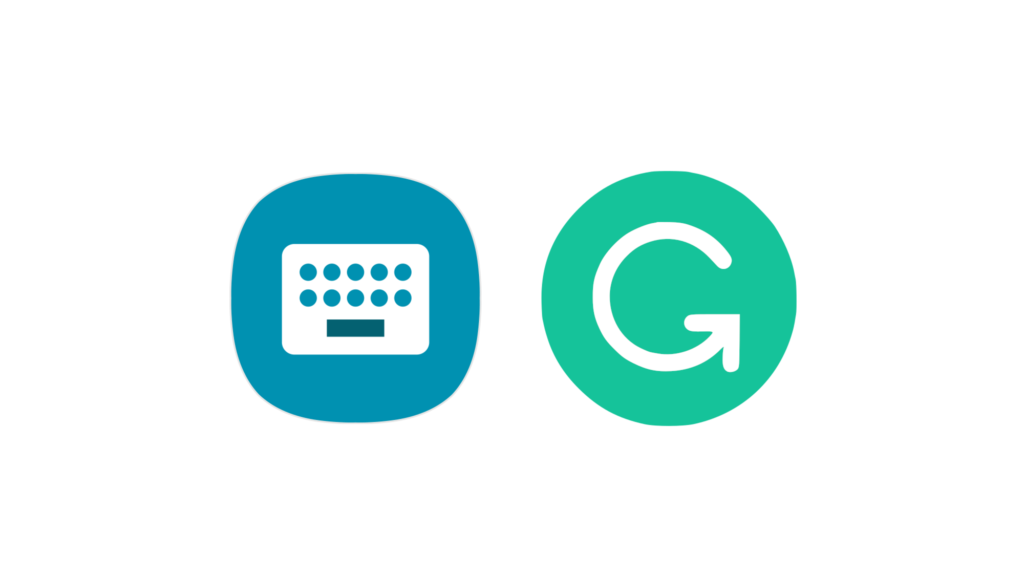
Faculty Ideas for Talking with Students About Grammarly
Grammarly is an automated writing feedback tool that incorporates AI and provides many features for editing, proofreading, and formatting. All employees and students have free access to a Grammarly Premium account through their Conestoga ID. For more information about Grammarly, download instructions, see Getting Started with Grammarly.
Are you thinking about talking with your students about Grammarly? This post shares questions and ideas from faculty who participated in the workshop, “Get Your Grammarly On.” Not all ideas shared may apply to your particular teaching situation or student learning needs, so feel free adapt the points below!
Reflections on student use of Grammarly
- How does Grammarly have the potential to “level the playing field” for all students?
- How can Grammarly help international students and other learners to overcome their fear of communication in English?
- What feedback features in Grammarly will help students to get the most helpful feedback?
- What feedback features (such as the tone/confidence or conciseness) may not always be helpful for students?
- How can I make students aware of the settings in Grammarly, including how it makes distinctions between English US, UK, and Canada?
- How can I overview how to use Grammarly in their assignments in case students who are new to the college may find it difficult to start with?
- How might I demo Grammarly in class?
- How can I talk about Grammarly transparently as a tool, to make students aware I know it exists and it can be valuable to share our knowledge with them to get the proper use out of it?
- How can I help students to understand the value of when to use Grammarly to “think through writing”?
- How can we invite students to share with us how they used Grammarly?
- How will student use of Grammarly be reflected in assessment rubrics?
- How can I refer students to Library Services for more support with learning to use Grammarly?
Ideas for encouraging students
- Grammarly is a helpful tool to correct technical errors. Please learn from its suggestions.
- Grammarly does a great job of giving suggestions for corrections or alternate wording. Suggested keywords in Grammarly can be helpful for students to see what other words might be used instead of their first choice.
- The feedback on sentence structure can help students to add their points and get their voice across.
- If English is your second or additional language, Grammarly can give you a basic understanding of sentence formation, lexical resources, grammatical range, and accuracy.
- This tool can be very useful tool for writing project proposals.
- You can use Grammarly to write a professional email to summarize notes after your group meeting.
- Grammarly can be very helpful in assisting students to create clear and concise writing, particularly for professional reports. It can be very useful in providing clarity to complex concepts to the reader.
- Students can create a Performance Report to gain a high-level overview of their writing.
- It’s a good idea to learn more about what Grammarly can do (and what it can’t do).
Ideas for cautioning and guiding students
- Grammarly is not error-proof. Students should also rely on their own skills.
- It is a tool and not everything that it says is correct. Use Grammarly but do not be dependent on Grammarly.
- Use with caution – don’t assume Grammarly is right all the time and press “accept all.”
- There may be some negative consequences to using it, like it choosing words that aren’t exactly right.
- Grammarly will analyze your APA formatting and references, but it may not get everything right.
- I encourage you to use Grammarly (linked) to help with run-on sentences, spelling, and punctuation. If you accept any of Grammarly’s changes, remember that you are responsible for the content and the form of any work you submit.
- Grammarly does not read minds. It does not know what you want.
- Think about your audience and the message they want/need to hear. You know better than Grammarly the purpose of your writing for your readers.
- Be aware that Grammarly might change the technical concept of the subject after correction.
- As an alternative to using Grammarly, try writing and editing your work by hand.
Ideas for guiding the writing process
- Let students know that the suggestions are colour-coded for when reviewing the feedback: red is more likely to be incorrect, whereas green is a preference.
- Remember to review the suggestions before you submit the work. Go through the errors one by one instead of accepting all the suggestions at once.
- You might want to look at some of the Grammarly YouTube videos to see how to use Grammarly in improving English grammar usage and then learn from it.
- If you are developing your unique voice as a writer, you might want to think about how Grammarly might make your writing less unique. Grammarly might try to “fix” your writing, but when you want to show what you think and how you feel sometimes the tool might suggest changes that would take away from your voice.
- Use Grammarly to check for grammar and spelling mistakes as these are items on the rubric. It can be useful to identify common patterns of errors in your writing to learn from for future improvement. If your are unsure about a suggestion, it’s ok to skip over it. Grammarly is a tool to support your writing, but you are still the author.
- As you are proofreading with Grammarly, pay attention to where the software went wrong.
- Choose what is appropriate for the assignment, represents your voice, and style of writing. You know more about the context and the purpose of your writing than Grammarly does.
- Use it at the end, when you are done writing—otherwise, it’s easy to get distracted fixing every little thing as you write, and this can impact your creativity and the flow of your ideas.
- Use your own creativity in your writing and then use Grammarly to polish your writing and use it as a supportive tool.
- After using Grammarly, be sure to reread your submission. You will be asked to explain any content submitted and your assessment will reflect your ability to support your written work orally.
Ideas for assessment instructions and riders
Here are some suggestions for verbal and written instructions and riders for using Grammarly with written assessments. Please note that students may have the option to “opt-out” of using Grammarly.
- Grammarly does a great job of giving suggestions for corrections or alternate wording. However, these are only suggestions. Remember to review the suggestions before you submit the work.
- Please feel free to use Grammarly to review your work before you submit. Note that minor errors that could have been corrected using Grammarly could lower your score.
- Please save two versions of your writing: the first being a version of your own writing prior to consulting Grammarly and the second being a revised version based on Grammarly’s suggestions. After doing this, reflect on what errors Grammarly helped you to identify. Given the software’s suggestions, do you believe you will be less likely to make such errors in the future?
- Submit both versions of your assignment – no Grammarly & Grammarly- and we will compare together in class.
- When you submit your assignment, please upload a copy of the Performance Report as well. This will give me an indication that you have used Grammarly for editing your work.
- Note that the assignment instructions ask you to use Grammarly before you submit.
- Grammarly and other AI’s are just tools that provide you with assistance. You are responsible for what you submit.
- Along with your assignment, please submit 3 new things you learned after submitting your assignment in Grammarly.
- Along with your assignment please submit a brief one-paragraph reflection of what changes they had to make that were suggested by Grammarly.
- I would explain in the introduction of an assignment/project that I am not assessing their grammar, but the integration of vocabulary and concepts taught in class. (There is a certain assumption that they come into our program with English ability).
- This quiz or test uses Respondus Lockdown. This means that no Grammarly or other editing assistant use is possible during quizzes, tests, and exams conducted via eConestoga.
Note: At this time, Grammarly Go is not enabled for the College’s premium license.
Looking for additional information about Grammarly? Check out these related posts:
- Getting Started with Grammarly
- Exploring Grammarly
- Grammarly Premium (EDU) – Preserving Academic Integrity in Writing
Research and References
Conestoga College Library (2021). Getting started with Grammarly. Video.
Dale, R., & Viethen, J. (2021). The automated writing assistance landscape in 2021. Natural Language Engineering, 27(4), 511-518. doi:https://doi.org/10.1017/S1351324921000164
Dembsey. (2017). Closing the Grammarly® gaps: A study of claims and Feedback from an online grammar program. The Writing Center Journal, 36(1), 63–100. https://doi.org/10.7771/2832-9414.1815
Dodigovic, M., & Tovmasyan, A. (2021). Automated writing evaluation: The accuracy of Grammarly’s feedback on form. International Journal of TESOL Studies, 3(2), 71–87. https://doi.org/10.46451/ijts.2021.06.06
Ghufron, & Rosyida, F. (2018). The role of Grammarly in assessing English as a Foreign Language (EFL) Writing. Lingua Cultura, 12(4), 395–403. https://doi.org/10.21512/lc.v12i4.4582
Ofgang, E. (2022, September 20). What is Grammarly and How Can It Be Used to Teach? Tips & Tricks. Tech and Learning.
Sanosi, A. (2022). To err Is human: Comparing human and automated corrective feedback. ITLT, 90(4),149–161.
Thi, N. K., Nikolov, M., & Simon, K. (2022). Higher-proficiency students’ engagement with and uptake of teacher and Grammarly feedback in an EFL writing course. Innovation in Language Learning and Teaching, ahead-of-print, 1–16. https://doi.org/10.1080/17501229.2022.2122476






